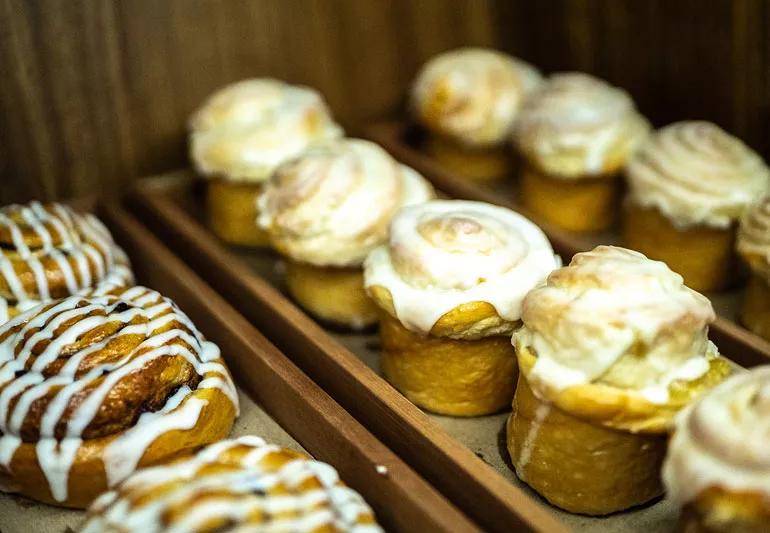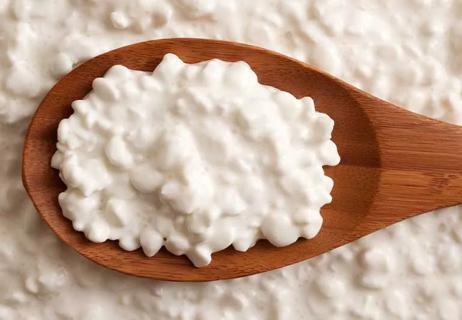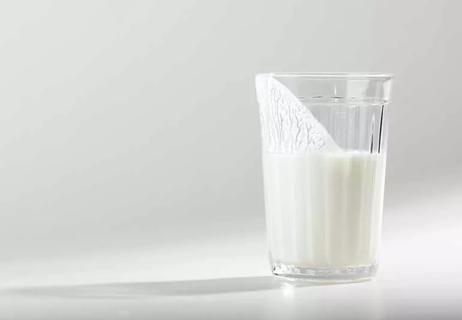Be sure to check the labels of common foods like canned tuna, bread, hot dogs and chocolate

You’d expect milk and ice cream to contain lactose — a type of sugar found in milk and milk products. But salad dressing and lunch meat? Sneaky!
Advertisement
Cleveland Clinic is a non-profit academic medical center. Advertising on our site helps support our mission. We do not endorse non-Cleveland Clinic products or services. Policy
And if you have a lactose intolerance or follow a dairy-free or vegan diet, you may need to avoid dairy products. But the list of foods that are dairy may be longer than you think.
Registered dietitian Anna Taylor, RD, LD, points out certain foods with dairy and what words to look for on your food labels if you’re living dairy-free.
The United States Department of Agriculture (USDA) defines dairy as milk, yogurt, cheese, lactose-free milk and fortified soy milk and yogurt.
But “nondairy” on a label doesn’t mean the product doesn’t contain milk derivatives. For example, a nondairy food may contain casein, one of the major milk allergens.
Looking for a list of dairy products to avoid? Here are some common foods that you may not think contain dairy but do.
Is butter a dairy product? Yes, says Taylor. Butter is typically made by churning cream that comes from a cow’s milk. And even margarine, which you may think is a dairy-free alternative, may contain dairy ingredients like whey or lactose.
“There are plenty of vegan margarines on the market now,” she says. “An easy way to double-check is a quick glance at the package. If a product contains milk, it must disclose this by saying ‘contains milk’ or similar wording at the end of the ingredients list.”
Advertisement
Does chocolate have dairy? Say it ain’t so! Unfortunately, lots of chocolate contains milk — milk chocolate, white chocolate and even some dark chocolate.
“There are plenty of dark chocolates that don’t contain milk as an ingredient, but they may still be cross-contaminated with milk if they are made on the same equipment as other types of chocolate,” clarifies Taylor.
Think twice before you reach for that dinner roll. You need to check the label to see if the bread you’re about to eat contains lactose (which is used sometimes as a sweetener) or whey (which is used in some cases as a preservative). You also need to watch out for crackers, which may also contain lactose and whey. Check the label for any dairy ingredients or milk derivatives (more on those in a moment).
Chocolate chip cookies, vanilla cake, bread pudding — the list can go on and on with baked goods that contain some form of dairy. Just think about all that butter in your go-to recipe for sugar cookies. And even if a recipe doesn’t call for butter, you need to watch out for those that use yogurt or milk.
“Of course, not all baked goods contain dairy. Grocery stores often carry specialty products that are dairy-free or even vegan, and the internet is swarming with dairy-free recipe alternatives for a variety of baked goods,” notes Taylor. “And if it’s a sweet tooth you’re coddling, there are also plenty of tasty plant-based ice creams on the market today that use an alternative like coconut milk or soy milk — so these would be dairy-free as well.”
The icing on the cake? It’s probably made with milk or even cream.
“Luckily, your holiday cookies can be decorated with a simple mixture of water and powdered sugar (food coloring and your favorite extract flavoring optional!),” suggests Taylor. “Let’s just not fool ourselves into thinking it’s any healthier just because it’s dairy-free!”
While you may not think of the ballpark staple containing any dairy, you need to be careful. Even sausages and deli meat may contain forms of dairy.
You know that homemade mashed potatoes are often made with milk and butter. But what about instant mashed potatoes? Sorry to burst your bubble, but the mixture often contains powdered milk or butter to add flavor.
Skip pre-made options, which tend to use lactose for a creamy consistency and to add flavor. Instead, opt to make your own salad dressing at home.
“Try mixing 1 part vinegar (such as apple cider vinegar, red wine vinegar or balsamic vinegar) or lemon juice to 3 parts olive oil,” shares Taylor. “Feel free to add some seasonings (like pepper or Italian seasoning) and a dollop of your favorite grainy mustard to flavor. It’s easy, fast and delicious — without all the unnecessary additives.”
It can be easy to chomp your way through a whole bag of barbecue or salt-and-vinegar potato chips, but any kind of chip that comes in a flavor like dill pickle or sour cream-and-onion often contain dairy in their seasoning.
Advertisement
Think you’re just getting tuna packed in water or oil? Think again, there may be hidden dairy ingredients. Many varieties turn to casein as a filler.
Sure, it makes sense that cream of chicken and cream of broccoli soups to have dairy (typically milk solids). But don’t forget to check other options, even chicken, vegetable and beef broth.
You just had a very garlicky lunch and need to freshen up your breath before your afternoon meeting. But did you know that some brands of gum use dairy in the form of casein? Make sure you read the label before you chew.
Taylor says to remember to check your medications, too. About 20% of prescription medications and 6% of over-the-counter drugs contain lactose. Talk to your doctor about your options.
“Or chat with your pharmacist about it,” she recommends. “They often have access to ingredient information for many medications and supplements.”
In addition to milk listed on a product’s label, you may be wondering: What is a milk derivative and what has dairy in it? If you’re avoiding dairy for any reason, it’s important to check your food labels for the following ingredients, many which are considered a milk derivative:
Advertisement
“Since milk is one of the top allergens in the U.S., it has to be listed directly under the ingredients list if a product contains any dairy,” emphasizes Taylor. “So, don’t forget to check that label!”
Advertisement
Learn more about our editorial process.
Advertisement

There’s definite nutritional value in chocolate milk, but the added sugar and calories can be a concern

Medications, dietary changes, abdominal massage and physical activity can all help you start to feel better

Experiment with numerous dairy alternatives or try taking a lactase enzyme medication before you eat dairy

Lactose is difficult to breakdown and digest because of its complexity

Drinking unpasteurized milk can cause issues like nausea, diarrhea, vomiting or, in some cases, serious illness

This dairy product can help you lose weight, manage blood sugar and strengthen bones

Rich in calcium and protein, milk has 18 of 22 essential nutrients that your body needs

A superfood, kefir is loaded with vitamins, minerals and nutrients

The best parenting style balances enforcing rules and showing plenty of love

Tips include cutting back on sugar, focusing on exercise and managing stress

It can be harder to let go when you’ve invested time, energy and emotions — but it might be the healthier choice long term